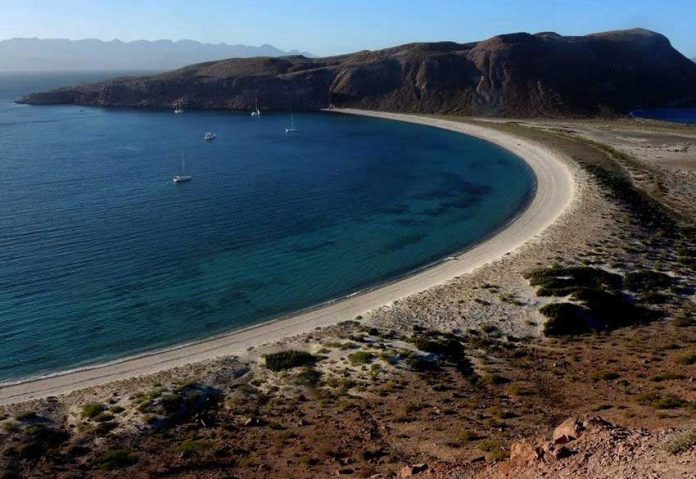Day 1, Los Islotes Island, Baja California Sur
We are anchored at the sea lion rookery of Los Islotes, 1,300 kilometers northwest of Mexico City. I am a guest of my friend Richard Gresham aboard his 51-foot sloop, the good ship God’s Way.
We set out from La Paz for this point early this morning, passing Steven Spielberg’s huge yacht, Seven Seas, along the way. The other two crew members are geologist Chris Lloyd and tarantula expert Rodrigo Orozco.
At the moment, I am the only person on board, as the other three are 29 meters away, hobnobbing with a bunch of very curious sea lion pups they found in a tiny inlet, a hopefully safe distance away from the enormous males sprawled over nearby rocks and creating a great stir with their loud, raucous calls.
“The babies kept nibbling at my fins . . . they nibble at everything, just to see what it is,” Rodrigo Orozco told me later. “They seemed to be having a lot of fun.”
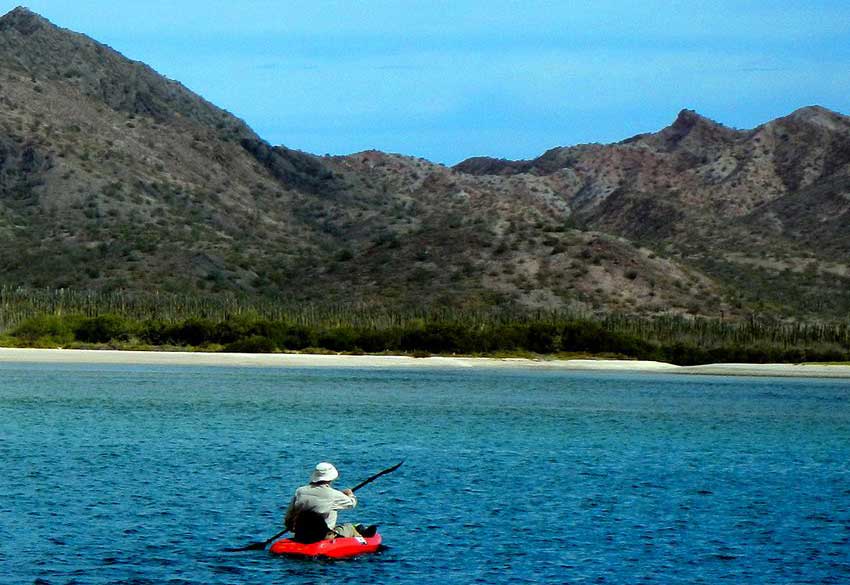
Jacques Cousteau called the Sea of Cortez “the world’s aquarium,” and no wonder. During just a few hours we have spotted parrotfish, butterflyfish, triggerfish, billfish, surgeonfish, groupers, mackerel and sardines. As for birds, we have seen pelicans, cormorants, boobies, sandpipers, great blue herons, ravens and, of course, seagulls.
With reluctance we raise anchor and head for our next destination, La Partida.
“It’s a nice, quiet place with a high, sloping wall that blocks the wind,” says the captain. “You’ll enjoy walking along the shore: it’s just teeming with marine life.”
Although our destination is nice and quiet, getting there is something else because the sea is choppy today. As soon as the engine is turned on, the boat begins to crash over the waves: Bang! Bang! Bang!
Everything inside the cockpit begins first to swing, then to rise and fall. Anything that wasn’t properly stored then slides off whatever surface it was on and crashes to the floor, rolling, bouncing, shattering or splashing in every direction.
Bang! Bang! Bang! As the spray washes over the deck, every window in the boat begins to leak, including the one above my bed.
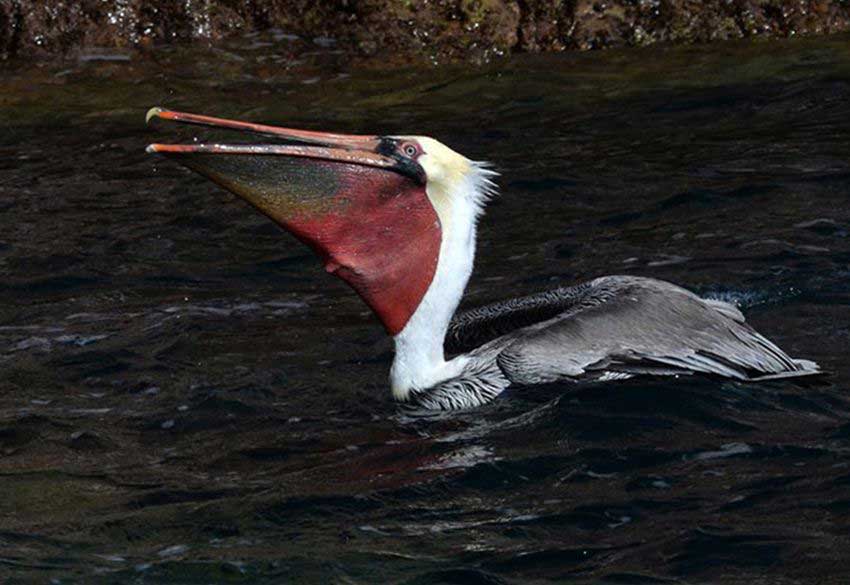
“Captain! The windows are leaking!”
The reply is barely audible over the commotion of a ship under way: “John, in a boat, everything leaks. Better get used to it.”
With the ship in motion, we crew members now have a choice: stay in the cockpit and get seasick or go on deck and get blasted by icy spray that hits you every time the boat crashes into a wave.
Well, on the deck it’s windy, wet and cold, guaranteeing that if you are up there during phase one you won’t be passing those four hours reading or writing, so I opt for the cockpit and, fortunately, my stomach quickly learns how to adjust to the wild thrashing of the boat.
Then the captain shouts, “Land ho!” The engine is shut off and there is a sudden hush as we glide into the sheltered bay. We have arrived.
God’s Way, my floating home for a week, is owned by “semi-retired” mining engineer Richard Gresham, who says he’s always dreamed of sailing and bought God’s Way from a very religious man living in the Bible Belt “who was no good at repairing anything, so I was able to buy the boat for a song because it was in a terrible state when I got it.
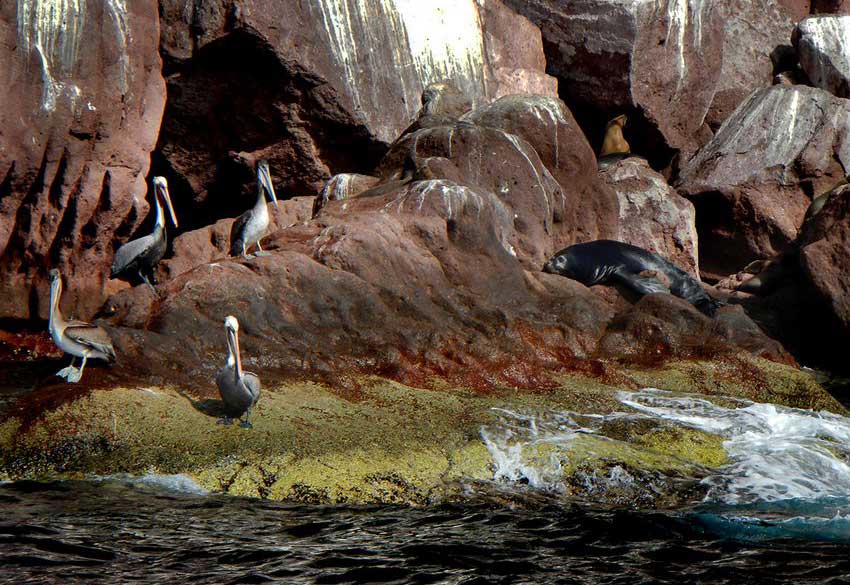
But then it cost me a fortune to get it up to where it is today. I bought this sloop with the intention of sailing it through the Panama Canal, up through the Caribbean and on to Boston . . . but projects got in the way and, in the meantime, I fell in love with the Sea of Cortez, which I have toured eight times so far and which I expect to tour several times more, as there is so much to see in this wonderful sea . . . life is good!”
Day 3, San Francisco Island
This island is notable for its high, barren, rocky walls “with a trail going up to the top.” Yesterday we had arrived here through a very choppy sea, but this morning the surface is as smooth as glass and I get what I hope will be a magnificent picture of sunrise — dawn, actually — through my porthole.
After breakfast we find our boat totally surrounded by sardines. The schools swirl like clouds of underwater starlings. Among them we can occasionally see needlefish which are truly long, thin and pointy, at least a foot long.
“They are only dangerous if you happen to get in their way,” I am told. Richard and Chris go snorkeling and once again see an astounding variety of exotic fish.
We raise anchor and glide across the mirror-smooth surface a couple of kilometers to Bahía Amortajada — ”Chopped-up Bay.” Now and again a manta ray leaps into the air alongside the boat.
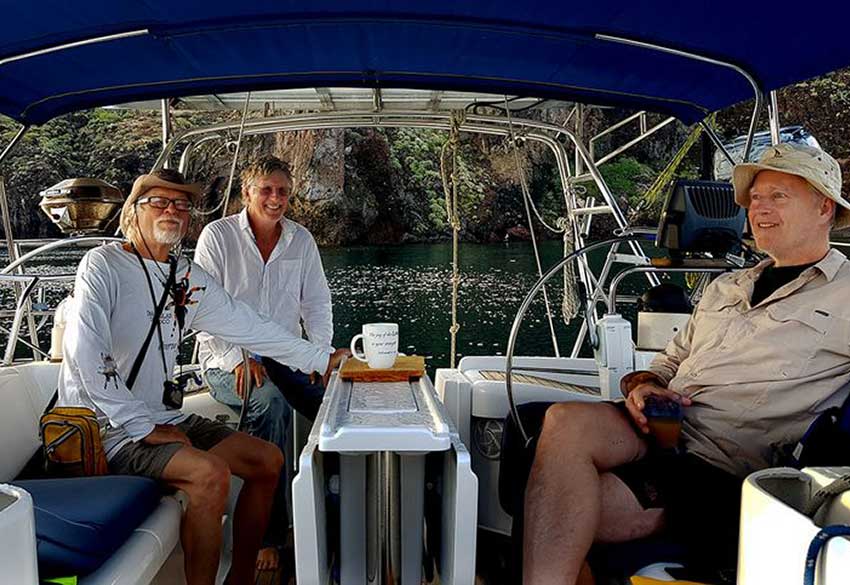
We anchor off a shore covered with a forest of giant cardon cacti, said to be the tallest in the world. Here there is a river filled with mangroves leading to a small lake. We spot a turkey vulture, kingfisher, white ibis, night heron, snowy egret and gulls.
Day 4
We are on our way to San José. This is part of the mainland connected by a long, rough road to La Paz. We drop anchor at a place called Nopaló, where there’s a very rocky beach and an isolated house — from which the wind wafts music to us over the waves. It’s Shakira singing! Binoculars reveal a little girl doing cartwheels to the music, on the porch.
To go ashore, we put on swimsuits, stuff clothing into a dry bag, carefully slide on to plastic “kayaks” that resemble no kayak I have ever seen, and paddle ashore.
We stroll down the beach to the home of Señora León, a jolly lady who immediately says, “Sí sí” when we ask whether she might be able to fry us some fish for which we would be happy to pay her.
While waiting for our dinner, we wander along a path paralleling a rough wall of volcanic rock dotted with shelter caves. The trail takes us to the local cemetery where we find only the graves of people named León, some with very large and impressive tombstones. It seems amazing that generations of the same family have lived in this isolated place.
[soliloquy id="71390"]
Setting foot on land reveals that we are no longer landlubbers. The salt cedars along the trail all seem to be swaying — but there’s no wind! And later, when we sit down in Señora León’s kitchen we all remark how curiously the walls are dancing and how amazing it is that nothing is rolling across the table.
Our ebullient hostess serves us a delicious meal of rice, broccoli and truly exquisite fried dorado (mahi mahi). We return to the boat stuffed and happy and spend the night anchored in the same bay.
To be continued
The writer has lived near Guadalajara, Jalisco, for more than 30 years and is the author of A Guide to West Mexico’s Guachimontones and Surrounding Area and co-author of Outdoors in Western Mexico. More of his writing can be found on his website.
